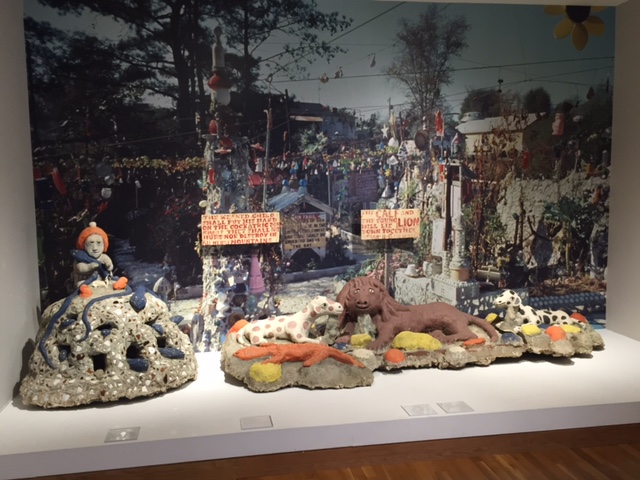Week 8: A Green Card Application and the High Museum of Art
Every once and while, however, there is a client in need of assistance that is still in the Atlanta area when he or she is eligible to apply for a green card. This week, I was able to assist the Immigrant Victims of Violence Program’s lead attorney, Alpa Amin, with preliminary preparations for a client’s green card application. This client was a VAWA applicant who was abused by her U.S. citizen spouse. Thus, she was immediately eligible to apply for her green card when her VAWA application was approved. Additionally, because she has nothing in her past that would make her inadmissible (e.g. she has not committed a crime or an immigration violation), she should be approved fairly easily, which, in turn, allows GAIN to able to help her without compromising its core goal of helping with VAWA, T visa, and U visa applications.
Therefore, this week I prepared the main form for the client’s application: the I-485. The form asks for a lot of biographic information: names, former addresses, family history, and even memberships in various associations like political or social groups. The form also asks for “yes or no” answers to a long list of questions designed to test whether the applicant is admissible. For example, it asks if the applicant has committed various types of crime (prostitution, murder, illegal gambling, and even genocide) or any immigration violations. Some of the questions seem a bit ridiculous. For example, one asks if the person has or intends to practice polygamy, and another asks if the person was a Nazi. While these questions seem easily answerable for our clients (with a resounding “NO”), we have to go through each and every one with a client so he or she can answer honestly and on the record. Therefore, we asked the client to come in for a meeting so we could obtain her answers for the form, as well as the requisite signatures for the I-489 form, for her G-28 form (which says she has chosen Alpa to be her attorney for this process), and for her I-912 fee waiver form. After having this meeting with the client, and allowing her to obtain some needed documentation, we should be ready to file her green card application very soon. It typically takes some time for the application to be processed, after which time an applicant must go for an interview and have a medical exam before being approved. However, I hope for this client’s sake that it gets approved quickly! She is a wonderful person, a great mother, and a very hard worker. She also dreams of one day becoming a Spanish translator. Having a green card will help her achieve this dream, and ensure that she can continue to provide for her children. In short, she is a very deserving candidate.
In my time off work this weekend, I visited Atlanta’s High Museum of Art. Founded in 1905 by the Atlanta Art Association, in conjunction with the High family, which donated their family home on Peachtree Street for the museum space. It is one of the leading art museums in the southeastern United States and houses over 11,000 works of American art, European art, African art, decorative art, folk art, photography, and contemporary art. In addition to housing art inside, there are also several sculptures on the museum’s grounds. The picture below is of a sculpture just outside the entrance. If you look closely, you’ll see that it is made up of stick figures.
Sculpture Outside the High Museum of Art

The current High Museum building is not the original High family house. Architect Richard Meier designed the current building, which opened in 1983. Apparently, he designed the interior to have a lot of natural light and with a nod to the Guggenheim Museum of Art in New York through its utilization of ramps between floors.
Ramps in the Museum

One of the current exhibitions is a floor mural by Michael Lin called Utah Sky 2065-40 (blue curve). It covers the entire floor of the first level of the museum, and is seen best from the second or third floor ramp.
The High Museum of Art and Michael Lin’s Utah Sky 2065-40 (blue curve)
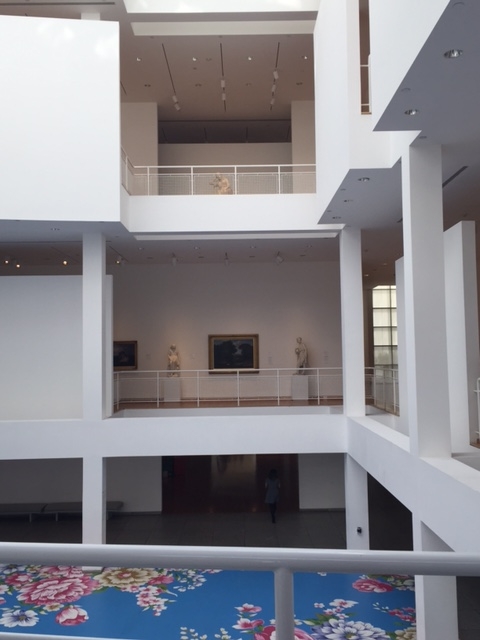
I studied abroad for a year in Paris, and had the opportunity to visit its many art museums. My favorite, however, was Musée d’Orsay, which houses mostly impressionist art. Therefore, my favorite pieces in the High’s collection were its French impressionist paintings, namely two by Monet, and one by Renoir.
Renoir’s “Woman Adjusting Her Hat”
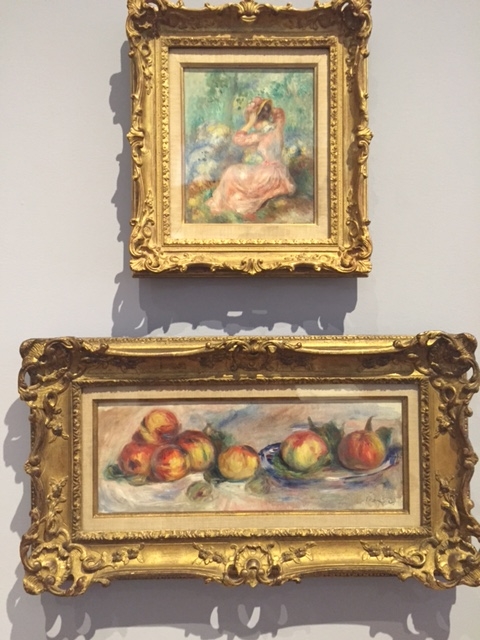
Monet’s Houses of Parliament in the Fog
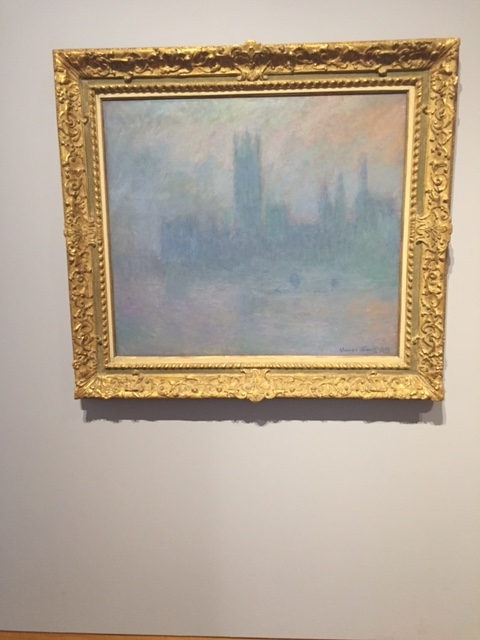
Monet’s Autumn on the Seine
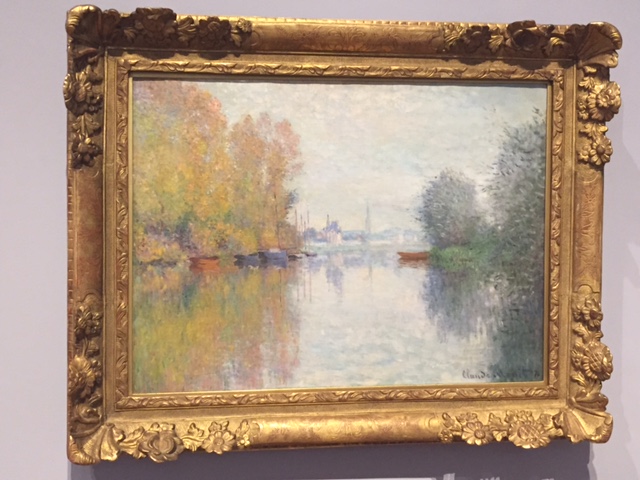
I also enjoyed some of the more contemporary exhibits like the one by Howard Finster called Paradise Garden. He was a self-taught American artist that liked to use his work to illustrate his faith and Bible verses. He also used some unusual materials. My favorite piece in this collection was his interpretation of verses from the book of Revelations. If you ever have the opportunity to visit Atlanta, I highly recommend you stop at the High.
Howard Finster’s Paradise Garden Collection
